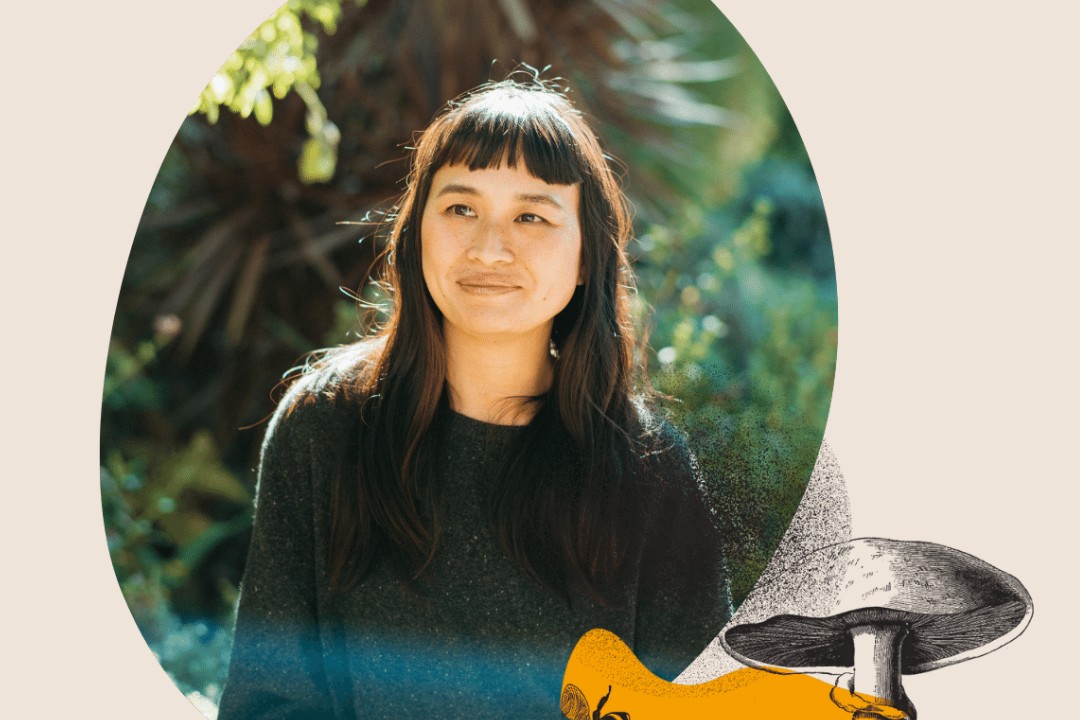We get asked about our co-ed relationship a lot.
LLC offered me not only my first executive experience, but my first experience of truly intentional shared leadership. This intentionality has been critical to the success of shared leadership at LLC. The hiring of a Co-ED was part of the organization’s efforts to better embody a model of shared power and to facilitate LLC founder Deborah Meehan’s transition away from the ED role. Additionally, LLC’s board and staff spent the year between Deborah’s transition and the onboarding of a new Co-ED, Nikkki Dinh, thinking about how our understanding of Co-Leadership was evolving. I also spent individual time thinking about what I was seeking in a partner. I entered into the Co-ED search with a clear understanding of the support I needed in a partner and what I could contribute to the Co-Ed relationship. Having a great coach was a key component of this learning process. My coach, Belma Gonzalez, who by the way is a godsend, led me through several reflection and visualization processes that helped me to see the kind of partner I was seeking, the kind of partner I wanted to be, and the kind of partnership I wanted to cultivate. I wanted a partner who understood the BIPOC experience or the experience of being othered, who was different from me in complementary ways, and who was interested in a partnership where we encouraged and supported each other to pay visits to our growing edges. I knew that trust, collaboration, balance, relationship, transparency, interdependence, understanding, and care were part of a necessary foundation of security that would allow me to be innovative and try on new things.
This intentional reflection not only allowed me to come into my second Co-ED partnership with a very clear idea of my needs and expectations, it also made it possible for me to communicate these to Nikki so that she in turn could make an informed decision that met her needs. I was also able to use learning from my prior experience as a new incoming Co-ED joining an established Co-ED to contribute to an onboarding process that I hope made Nikki’s start at LLC feel welcoming, filled with possibility, and open to Nikki being Nikki (She assures me this is so). My goal was to build a relationship of mutual support that would allow my partner to grow into the vision they had for themselves.
The results were magical. This clarity firmly grounded our relationship, giving our partnership a solid foundation. My work now feels more possible and expansive because I know that at my back is a supportive partner who is aligned with me.
Every Spell Ain’t for Everybody
The Co-ED model is not a miracle cure for shared power. What I am describing is my experience, unique to me and LLC, and likely not immediately applicable to other organizations. What is universal, I believe, is the fact that the Co-ED relationship is just that, a relationship, and is open to the benefits and pitfalls of any relationship. Not all relationships are healthy; I invite you to stay tuned for future blogs that discuss how to manage in the hard times as even healthy relationships have points of challenge and conflict. A successful Co-ED relationship requires the EDs to focus on what Nikki has shared as “conscious relationship building” (a concept she was introduced to by the team at Coaching for Healing, Justice and Liberation). When you do that, the Co-ED partnership can be truly rewarding, personally, I wouldn’t choose to work in any other way.
Nikki & Ericka’s Spell for Conscious ED Relationship Building
1. Institutional Commitment to Shared leadership
a. For LLC this looks like full staff and board commitment to shared leadership in both theory and practice. At LLC, everyone knew we’d signed up for something different, so people didn’t expect the Co-EDs to function as a traditional sole ED. This required the staff and board to allow time for discussion, to sit with some unknowns/uncertainty, and practice patience.
b. Practice: Allocated time and resources to trust and relationship building and collective learning on shared leadership models. LLC engaged in many public and internal conversations over the years preceding the adoption of a shared leadership model and began playing with different approaches.
2. Coaching
a. Coaching with Belma Gonzalez in both of my Co-ED relationships helped me to better understand myself as a leader and as Co-ED partner, and created space for each partnership to navigate challenges in a safe space. Reflective practices such journaling and guided visualizations helped me to develop very clear understanding of my vision for the Co-ED relationship. Note: We intentionally sought out Belma because she is experienced in coaching partnerships and teams, not just individual leaders.
b. Practice: Individual and partnership coaching. We get coaching separately and together.
3. Clear Vision
a. As part of the Co-ED recruitment process, the reflection practices Belma encouraged me to adopt ultimately became second nature. At random times I would jot down partnership desires as they arose. When I later shared a compilation of those reflections with Nikki, she joked that I was a witch who had conjured her, so closely did my description of my desires match her.
b. Practice: Frequent goal setting and prioritization of work ahead. We use an ongoing notes document and Monday.com to help us organize our priorities.
4. Transparency and Open Communication
a. Saying what we need to be in a conscious relationship with each other. This includes explicitly naming our boundaries, how we want to communicate, e.g. text, phone, email, etc., sharing what’s important to us, e.g. ending meetings on time, and being clear about our pet peeves and points of vulnerability.
b. Practice: 30-minute check-ins early in the week just to check in on how we are and what is going on in our lives. We have longer workspaces later in the week. Workspaces are intentional times to both discuss and complete work tasks.
5. Process for Clear Distribution of Work
a. Nikki and I use “Pilot/Co-pilot” as a shorthand to describe our work distribution. This is based on the analogy that a plane has two capable pilots at the wheel, but only one is flying the plane at any given time. The “Pilot” is ultimately responsible for being mindful of an assignment’s direction, strategy, and key tasks. The “Co-Pilot” acts as backup and support. Sometimes one of us is the “Pilot” for an entire project and other times we divvy up piloting responsibilities within a project. Piloting responsibilities are distributed based on the capacity, skills, and importantly, the passions of each Co-ED. We don’t yet have a work distribution where staff only do “fun” work, but more often than not that is the case. LLC’s centering of pleasure, including doing work that is in alignment with our skills and interests and that is simply fun, has been good for all of us. We are more energized, feel more connected and now have more room for innovation, exploration, and creativity.
b. Practice: List out the responsibilities you hold, and try on responsibility distribution tools like MOCHA, RACI, RAPID, or pilot/co-pilot. Explicitly name fun, interest, and/or energy as distribution criteria
6. Aligned Values
a. Knowing our values, or uncovering them together has been part of our process. Nikki and I learned that we both care about liberation for our people, we want our work to contribute to that liberation, and we want the manner of our work to be and feel liberatory.
b. Practice: Getting to know our own “whys” so that we can share them with each other. Coaching, regular check-ins, and in-person team retreats supported this for us. It also happens over time when you create opportunities for practice, so give yourself some patience.
7. Compliments and Complements for Trust Building
a. Complimentary: Nikki and I like and appreciate each other. We are constantly supporting and authorizing each other and our full team to be great. This has a kind of new thinking multiplier effect. We often recognize the gifts our teammates may not see in themselves, freeing us to grow in new ways. Another thing that is true for LLC is that we are generous with praise and thoughtful about criticism.
b. Complementary: While Nikki and I are two BIPOC women who are able to understand each other and support each other from a place of shared experience with marginalization, we are also different ages/generations and come from different racial and geographic backgrounds; so we have many opportunities to learn from each other. We are surprisingly well-balanced in terms of skills and interests. We share a solid overlapping base of capacities, but we also shine in different ways. For example, there are times when I become a whirlwind of ideation, in these moments Nikki is adept at creating containers that harness those ideas and make it easier to cultivate them. Or when I shift to a “just the facts” mindset, Nikki remembers to bring in whimsy and beauty. What is important to note, is that in this balance we don’t pigeonhole the other, demanding that we can only show up in one way with rigid relationship roles (e.g. Taskmaster versus slacker). Instead, we are responsive to the conditions of the moment and each other’s needs.
c. Practice: Normalize giving feedback, and also keep in mind that studies say the ideal ratio is five praises to one critique. Our team has weekly check-ins for “Ow, Wows, Aha’s, and Appreciations” – where we can bring up big and small accomplishments and opportunities for improvement.
8. Ego Checks
a. To reap the benefits of the Co-ED relationship, I had to be willing to give up rigid holds on power, and share power and space so Nikki could shine, simultaneously, Nikki did the same for me. This sharing requires leaders to do some ego work, releasing some of the attachment you might have to “being the boss.” I used to say for shared leadership to thrive, leaders need to learn to “step back rather than stepping out” to make room for the leadership of others. While this might be accurate, what it felt like in this case was the act of stepping in with Nikki, moving toward Nikki. Instead of me making space or requiring Nikki to take space, we practice sharing space and building power with each other.
b. Practice: Coaching, reflection, journaling, and learning about other teams with shared leadership models are effective ways to do the “inner work” shared leadership demands. We’ve also found it helpful to step back and appreciate the joy and even the “productivity” shared leadership can offer.
9. Time
a. You have to let this spell simmer; incorporating, understanding, and appreciating the various components takes time. The “flavors” of the Co-ED relationship don’t develop instantaneously.
b. Practice: As you practice learning by doing, we encourage you to build in space for reflection. Retreats, time off, and “no meetings” Fridays are some ways we’ve been working out how to do this work together and in partnership.
Related Posts
October 24, 2023
Boo! What’s scary about shared and distributed leadership?
August 22, 2023
Oasis: LLC Culture
February 15, 2022




